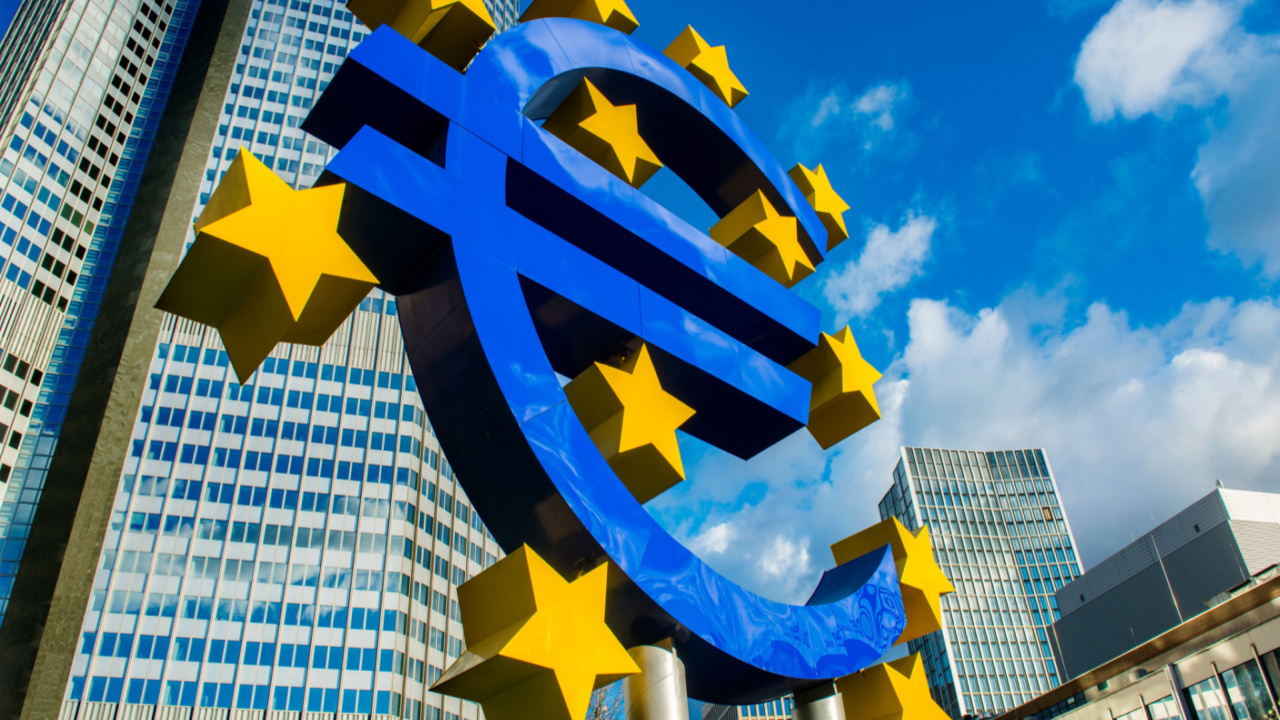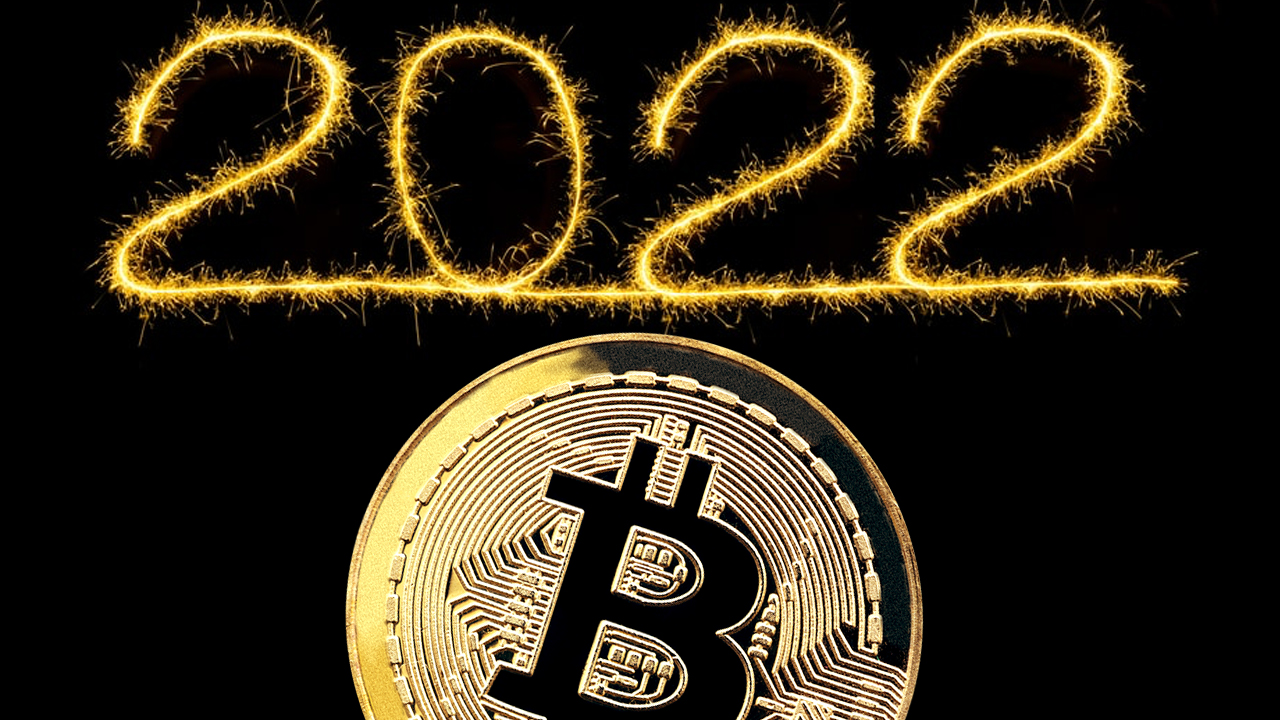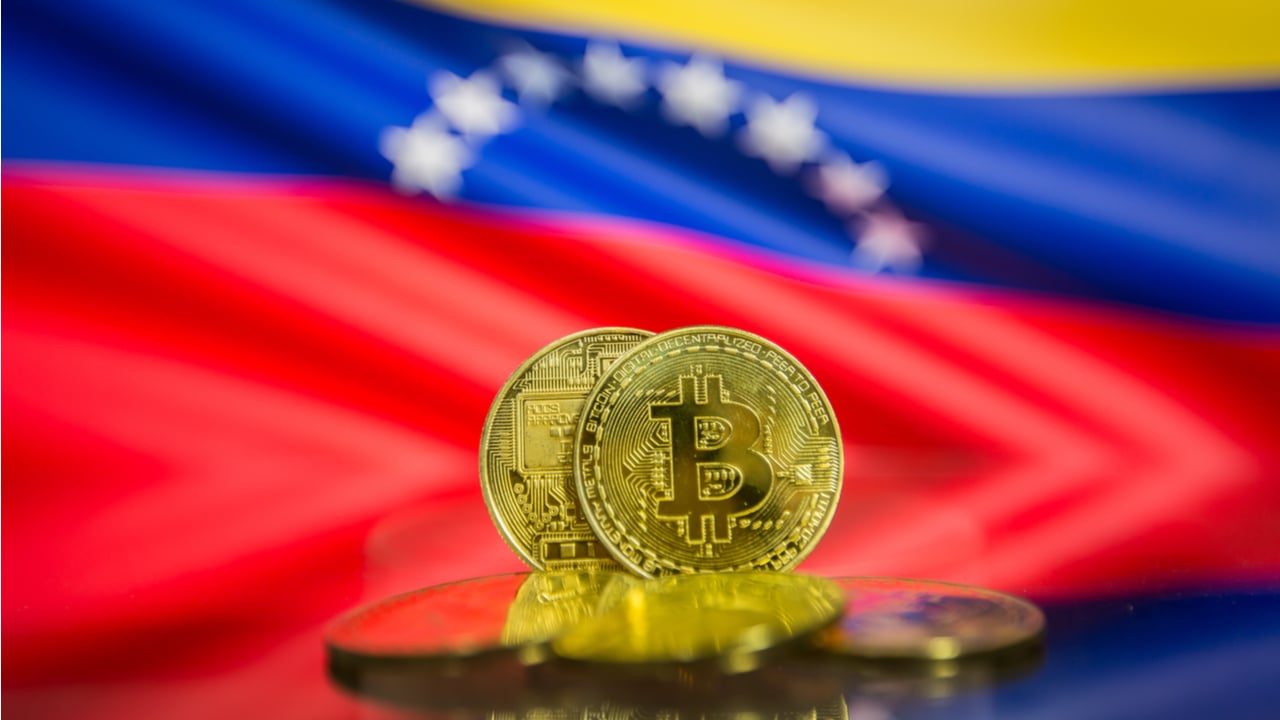 A group of economists evaluating the potential effects of a digital euro have insisted that restricting access to the upcoming currency is necessary to preserve the current financial system. Their study follows an earlier proposal to limit digital euro deposits at the European Central Bank (ECB) to €3,000 per person. Limited Availability of Digital Euro […]
A group of economists evaluating the potential effects of a digital euro have insisted that restricting access to the upcoming currency is necessary to preserve the current financial system. Their study follows an earlier proposal to limit digital euro deposits at the European Central Bank (ECB) to €3,000 per person. Limited Availability of Digital Euro […]
Tether reports that its total commercial paper exposure has been cut to $3.7 billion from $30 billion just one year ago.
Major stablecoin issuer Tether has reiterated that the company plans to completely rid itself of commercial paper backing for its U.S.-dollar stablecoin USDT.
In a blog post on Wednesday, Tether said it “holds no Chinese commercial paper as of today,” while its total commercial paper exposure has been cut to $3.7 billion from $30 billion one year ago.
By late August 2022, Tether said it plans to decrease commercial paper exposure to as low as $200 million, targeting zero commercial paper holdings by the end of October, the statement reads.
“Tether continues to ensure that it has a diversified portfolio with limits to exposure on individual issuers or assets. Its reduction in commercial paper is a commitment to its community,” the firm said.
The post came in response to the ongoing FUD around Tether, with some reports alleging that Tether’s commercial paper portfolio is 85% backed by Chinese or Asian commercial papers. Tether previously denied the reports in mid-June, stating that such allegations were “completely false.
Related: Tether continues to reduce commercial paper in sharp reduction since March
In the latest blog post, Tether pointed out that false reports pose the “biggest threat to the cryptocurrency industry that currently exists,” adding:
“It is a threat of the same concern as scams, hacks or cyberattacks because the spreading of false information risks not only the reputation of the industry but also each and every member of the community.”
In June, Tether chief technology officer Paolo Ardoino claimed that the USDT has been the subject of a “coordinated attack” by hedge funds looking to short-sell the stablecoin. Ardoino said that Tether has been collaborating with regulators to increase transparency efforts and phase out its commercial paper exposure.
 On Tuesday, a newly published report details that the cryptocurrency exchange Kraken is under federal investigation for allegedly violating U.S. sanctions, according to five people familiar with the matter. The unknown sources explained that the inquiry into Kraken started in 2019, and it’s accused of allowing users from sanctioned countries like Iran access to the […]
On Tuesday, a newly published report details that the cryptocurrency exchange Kraken is under federal investigation for allegedly violating U.S. sanctions, according to five people familiar with the matter. The unknown sources explained that the inquiry into Kraken started in 2019, and it’s accused of allowing users from sanctioned countries like Iran access to the […] On July 13, the dedicated crypto price tracking, volume, and market capitalization web portal Coingecko published the company’s “Q2 2022 Cryptocurrency Report” which discusses the last quarter’s crypto market action and insights. The 46-page report explains how the Terra UST and LUNA fallout wreaked havoc on the entire crypto ecosystem and the stablecoin economy. Moreover, […]
On July 13, the dedicated crypto price tracking, volume, and market capitalization web portal Coingecko published the company’s “Q2 2022 Cryptocurrency Report” which discusses the last quarter’s crypto market action and insights. The 46-page report explains how the Terra UST and LUNA fallout wreaked havoc on the entire crypto ecosystem and the stablecoin economy. Moreover, […] According to a recent report, Blockchain.com has laid off a quarter of the company’s staff and it has closed the crypto company’s Argentina-based offices as well. The layoffs follow the report that noted Blockchain.com lost $270 million due to exposure to Three Arrows Capital (3AC).
Blockchain.com Lays Off 150 Workers Citing Crypto Winter Conditions
[…]
According to a recent report, Blockchain.com has laid off a quarter of the company’s staff and it has closed the crypto company’s Argentina-based offices as well. The layoffs follow the report that noted Blockchain.com lost $270 million due to exposure to Three Arrows Capital (3AC).
Blockchain.com Lays Off 150 Workers Citing Crypto Winter Conditions
[…]
The advisory primarily targets reporting of NFTs investments that represent “property,” such as real estate.
The United States Office of Government Ethics (OGE) issued a legal advisory recommending various instances when senior government officials are required to disclose their investments in nonfungible tokens (NFT).
In the legal advisory presented to the designated agency ethics officials, director Emory Rounds III said that all NFT investments — both fractionalized (F-NFTs) and collectibles — worth $1,000 must be reported if “held for investment or production of income” at the end of the reporting period.
The guidance provided by the federal agency also requires reporting of NFT investments if officials made profits over $200 during the reporting period, adding that:
“Public financial disclosure filers must also disclose purchases, sales, and exchanges of collectible NFTs and F-NFTs that qualify as securities.”
The advisory primarily targets reporting of NFTs investments that represent “property,” such as real estate. However, the OGE previously ruled that personal assets, including clothing, electronics or family photos — or NFTs representing the same — are not reportable.
Based on the circumstances disclosed by each filer, collectibles may or not be required to disclose as financial investments. Rounds laid down seven questions to help filers self-determine their reporting requirement, as shown below.

Filers have been advised to use the OGE Form 278e for reporting NFT investments, wherein investors must include details such as the value, income type and income amount of all eligible NFTs. The OGE revealed to continue monitoring advancements in crypto and modify the above guidance as deemed necessary in the future.
Related: US lawmaker criticizes SEC enforcement director for not going after 'big fish' crypto exchanges
Congressman Brad Sherman advised the Securities and Exchange Commission (SEC) to pursue securities cases against cryptocurrency exchanges with “fortitude and courage.”
Highlighting SEC’s attempt to investigate crypto exchanges, enforcement director Gurbir Grewal referred to a case brought against Poloniex in August 2021. However, Sherman pointed out the need for pursuing investigations against bigger exchanges such as Binance and Coinbase:
“The big fish operating the major exchanges did many, many tens of thousands of transactions with XRP. You know it’s a security — that means they were illegally operating a securities exchange. They know it’s illegal because they stopped doing it, even though it was profitable. [...] I hope you focus on that.”
In tune with Sherman’s request for stricter monitoring of crypto exchanges, both SEC chair Gary Gensler and Grewal cited concerns about cryptocurrency enforcement in the government department’s budget request for the 2023 fiscal year.
 The Bank of Spain has issued a new report about the performance of Latam economies during the first six months of the year. The document states that the current inflationary development that several countries of the region have can lead to institutional instability, even as the region is still recovering from the Covid-19 pandemic. Bank […]
The Bank of Spain has issued a new report about the performance of Latam economies during the first six months of the year. The document states that the current inflationary development that several countries of the region have can lead to institutional instability, even as the region is still recovering from the Covid-19 pandemic. Bank […] A new report by the European Central Bank (ECB), presented as a “deep dive into crypto financial risks,” calls for “appropriate” regulation and oversight of stablecoins and decentralized finance (defi). It also addresses the hot topic of Bitcoin’s carbon footprint in Europe, suggesting a ban on proof-of-work mining is probable. Growth of Stablecoins, Defi Warrants […]
A new report by the European Central Bank (ECB), presented as a “deep dive into crypto financial risks,” calls for “appropriate” regulation and oversight of stablecoins and decentralized finance (defi). It also addresses the hot topic of Bitcoin’s carbon footprint in Europe, suggesting a ban on proof-of-work mining is probable. Growth of Stablecoins, Defi Warrants […]
Where can one safely store digital assets, earn crypto rewards and trade coins intermittently, while the market continues to see a sea of red?
There is an old saying, “cash is king,” but if it is sitting in a bank account or, in the case of crypto — a wallet, it diminishes daily due to inflation. This is especially the case now as inflation in the United States breaks its 40-year record. While the dollar-cost-averaging (DCA) strategy allows an investor to minimize the effects of volatility by purchasing an unstable asset in time intervals, inflation still causes a decrease in a target asset’s value over time.
For instance, Solana (SOL) has a pre-set protocol inflation rate of 8%, and if the yield is not generated through farming or utilizing decentralized finance (DeFi), one’s holdings are depreciating at a rate of 8% per year.
However, despite the U.S. Dollar Index (DXY) increasing by 17.3% in a year, as of July 13, 2022, the hopes of receiving significant returns in the bull market are still pushing investors to engage with volatile assets.
In the upcoming “Blockchain Adoption and Use Cases: Finding Solutions in Surprising Ways” report, Cointelegraph Research will dig deeper into different solutions that will help to resist inflation in the bear market.
Download and purchase reports on the Cointelegraph Research Terminal.
Crypto winter is a period where anxiety, panic and depression start to burden investors. However, many crypto cycles have proven that real value capture can be attained during a bear market. For many, the current sentiment is that “buying and holding,” combined with DCA, may be one of the best investment strategies during a crypto winter.
In most cases, investors abstain from outright investment and amass capital to purchase assets when the macro condition improves. However, timing the market is challenging and is only feasible for active daily traders. In contrast, the average retail investor carries higher risks and is more vulnerable to losses coming from rapid market changes.
In the midst of various calamities in the crypto universe, placing assets in staking nodes on-chain, locking in liquidity pools or generating yield through centralized exchanges all come with a hefty amount of risk. Given those uncertainties, the big question remains whether it’s best to just buy and hodl.
Anchor Protocol, Celsius and other yield platforms have recently demonstrated that if the foundation of yield generation is poorly backed by the tokenomics model or the platform’s investment decisions, too-good-to-be-true yields may be replaced by a wave of liquidations. Generating yield on idle digital assets via centralized or decentralized finance protocols with robust risk management, liquid rewards and yield offerings that are not too aggressive is probably the least risky pathway for fighting inflation.

Both DeFi and centralized finance (CeFi) protocols can offer varying levels of yields for identical digital assets. With DeFi protocols, the risk of lock-ups to generate marginal yield is yet another major factor, as it limits an investor’s ability to react quickly should the market adversely change. Moreover, strategies may carry additional risks. For instance, Lido liquid staking with stETH derivative contracts is vulnerable to price divergence from the underlying asset.
Although CeFi such as Gemini and Coinbase, unlike multiple other such platforms, have demonstrated prudent user fund management with transparency, yield offerings on digital assets are insignificant. While staying within the risk management framework and not taking aggressive risks with the user’s funds is beneficial, the returns are relatively low.
While keeping a buying discipline within the DCA framework and doing research are crucial, finding a low-risk solution generating substantial yields may be tricky. Meanwhile, a new crypto market cycle is set to bring developments that will hopefully bring novel solutions, attractive in both risk and returns. Cointelegraph Research evaluates multiple platforms and assesses the sustainability of current DeFi and CeFi yields in its upcoming report.
This article is for information purposes only and represents neither investment advice nor an investment analysis or an invitation to buy or sell financial instruments. Specifically, the document does not serve as a substitute for individual investment or other advice.
 Venezuela, one of the first countries in Latam to be considered “crypto-friendly” by some standards, has ranked third in adoption rates, according to a report issued by the United Nations. The report, issued last month, states that the cryptocurrency ecosystem has grown by 2,300% between September 2019 and June 2021, and that the Covid-19 pandemic […]
Venezuela, one of the first countries in Latam to be considered “crypto-friendly” by some standards, has ranked third in adoption rates, according to a report issued by the United Nations. The report, issued last month, states that the cryptocurrency ecosystem has grown by 2,300% between September 2019 and June 2021, and that the Covid-19 pandemic […]